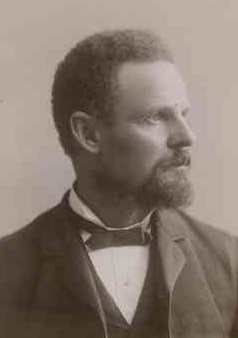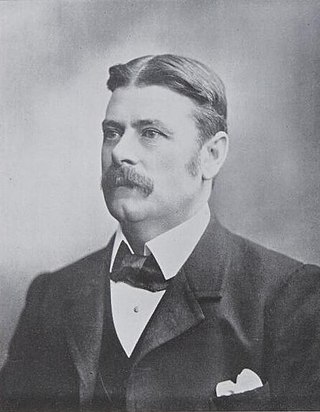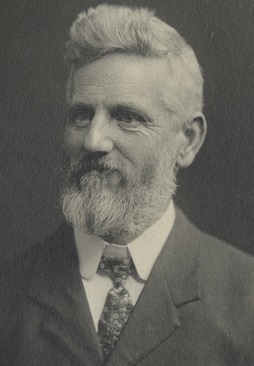
Charles Cameron Kingston was an Australian politician. From 1893 to 1899 he was a radical liberal Premier of South Australia, occupying this office with the support of Labor, which in the House of Assembly was led by John McPherson from 1893, and by Lee Batchelor upon McPherson's death in 1897.

The Legislative Council, or upper house, is one of the two chambers of the Parliament of South Australia. Its central purpose is to act as a house of review for legislation passed through the lower house, the House of Assembly. It sits in Parliament House in the state capital, Adelaide.

Sir John William Downer, KCMG, KC was an Australian politician who served two terms as Premier of South Australia, from 1885 to 1887 and again from 1892 to 1893. He later entered federal politics and served as a Senator for South Australia from 1901 to 1903. He was the first of four Australian politicians from the Downer family dynasty.
SA Unions is the peak body for trade unions in South Australia. It coordinates political, social, economic, and industrial campaigns between its affiliate members and implements the policies of the Australian Council of Trade Unions in South Australia.

Egerton Lee Batchelor was an Australian politician and trade unionist. He was a pioneer of the Australian Labor Party (ALP) in South Australia, which at the time was known as the United Labor Party (ULP). He was a member of the South Australian House of Assembly (1893–1901), leading the ULP from 1898 until his resignation in 1899 to accept a ministerial post in a non-Labor government, with the party's approval. Batchelor entered federal politics in 1901 and held cabinet posts in the first three ALP governments. He was Minister for Home Affairs (1904) under Chris Watson, and then served two terms as Minister for External Affairs under Andrew Fisher. He suffered a fatal heart attack at the age of 46 while climbing Mount Donna Buang.

William John Copley was a South Australian politician. He was a member of the South Australian House of Assembly from 1884 to 1887, representing Frome, switched to the South Australian Legislative Council from 1887 to 1894 representing Northern District, before returning to the House of Assembly from 1896 to 1904, representing Yorke Peninsula. He was Leader of the Opposition for a period in 1896, and served as Commissioner for Crown Lands and Immigration (1890-1892) and Minister for Agriculture and Education (1892) under Thomas Playford II and Chief Secretary (1893) and Minister for Agriculture and Education (1892-1893) under John Downer.

Ernest Alfred Roberts was a Labor member of the South Australian House of Assembly from 1896 to 1902 and 1905 to 1908 and then the Australian House of Representatives from 1908 to 1913. Roberts also served as an officer in South Africa during the Second Boer War, with South Australian colonial forces in 1900 and Commonwealth forces in 1902. From 1904 to 1908 he was the editor of The Herald, a left-wing newspaper published by the United Labor Party (ULP).

John Abel McPherson was the first leader of the South Australian United Labor Party from 1892 to 1897. Though he never led a government himself, he helped lay the groundwork which ensured that at the 1905 election, Thomas Price would form the world's first stable Labor government. John Verran led Labor to form the state's first of many majority governments at the 1910 election.

Colonial elections were held in South Australia from 9 April to 23 April 1890. All 54 seats in the South Australian House of Assembly were up for election.

The 1896 South Australian colonial election was held on 25 April 1896 to elect all 54 seats in the South Australian House of Assembly. In the seat of Northern Territory, the election was on 2 May. All 54 seats in the South Australian House of Assembly were up for election. The incumbent liberal government led by Premier of South Australia Charles Kingston in an informal coalition with the United Labor Party (ULP) led by John McPherson defeated the conservative opposition. Each district elected multiple members, with voters casting multiple votes.

The 1899 South Australian colonial election was held on 29 April 1899 to elect all 54 seats in the South Australian House of Assembly. In the seat of Albert, the incumbent members were elected unopposed on 12 April, and the election in the seat of Northern Territory was held on 6 May. All 54 seats in the South Australian House of Assembly were up for election. The incumbent liberal government led by Premier of South Australia Charles Kingston in an informal coalition United Labor Party (ULP) led by Lee Batchelor defeated the conservative opposition led by Leader of the Opposition John Downer. Each district elected multiple members, with voters casting multiple votes. Although the conservatives won more seats, the liberal government retained power until later that year, when new conservative leader Vaiben Louis Solomon forced the government to resign, but only held office for one week. The liberals held government until the next election through leaders Frederick Holder and John Jenkins.

The 1902 South Australian state election was held on 3 May 1902 following the dissolution of both houses. All 42 seats in the South Australian House of Assembly were up for election, and all 18 seats in the Legislative Council. The House had a reduction of 12 seats compared to the previous election. The Council was reduced from 6 members in each of four districts to 6 members from Central District and four from each of North-Eastern, Northern and Southern Districts. The incumbent liberal government led by Premier of South Australia John Jenkins in an informal coalition with the conservatives defeated the United Labor Party (ULP) led by Thomas Price. Each of the 13 districts elected multiple members, with voters casting multiple votes.

The 1905 South Australian state election was held on 27 May 1905. All 42 seats in the South Australian House of Assembly were up for election. The incumbent conservative government led by Premier of South Australia Richard Butler in an informal coalition with the liberals was defeated by the United Labor Party (ULP) led by Leader of the Opposition Thomas Price. Each of the 13 districts elected multiple members, with voters casting multiple votes.

The 1906 South Australian state election was held on 3 November 1906 to elect all 42 seats in the South Australian House of Assembly. The seat of Northern Territory went to an election on 10 November.

State elections were held in South Australia on 2 April 1910. All 42 seats in the South Australian House of Assembly were up for election. The incumbent Liberal and Democratic Union (LDU) government led by Premier of South Australia Archibald Peake was defeated by the United Labor Party (ULP) led by John Verran. Each of the 13 districts elected multiple members, with voters casting multiple votes. The Peake LDU minority government had replaced the Price ULP/LDU coalition government in June 1909. The 1910 election was the first to result in a South Australian majority government. This came two weeks after the election of a first majority in either house in the Parliament of Australia at the 1910 federal election, also for Labor. Though a South Australian majority was won, the ULP did not take office until after the new lower house first met.
A by-election was held for the South Australian House of Assembly seat of East Adelaide on 23 January 1892. This was triggered by the resignation of the progressive former Premier and state MHA John Cox Bray.
Wallaroo is a defunct electoral district that elected members to the House of Assembly, the lower house of the bicameral legislature of the Australian state of South Australia. It was established in 1875 and abolished in 1970.
East Adelaide was an electoral district of the South Australian Legislative Council from 1851 to 1857 and an electoral district of the South Australian House of Assembly from 1862 to 1902.
A by-election was held for the South Australian House of Assembly seat of Wallaroo on 23 May 1891. This was triggered by the resignation of the former Wallaroo MHA David Bews.

The South Australian Labor Party, officially known as the Australian Labor Party (South Australian Branch) and commonly referred to simply as South Australian Labor, is the South Australian Branch of the Australian Labor Party, originally formed in 1891 as the United Labor Party of South Australia. It is one of two major parties in the bicameral Parliament of South Australia, the other being the Liberal Party of Australia (SA Division).















